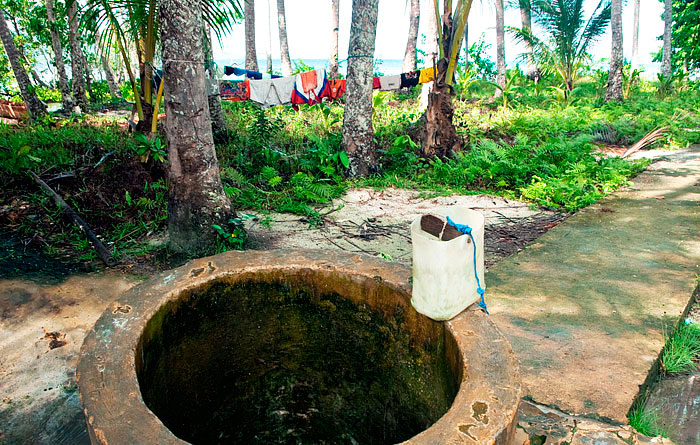- The drinking water supplied at most Raja Ampat homestays is commercial drinking water in 20 litre containers.
- Some remote homestays still use boiled water from local supplies. Is it safe to drink? Yes!
You don’t need to worry about your drinking water supply if you’re staying at a Raja Ampat homestay. All of Raja Ampat’s inhabited islands have ready access to fresh water from springs and/or wells. (Note that Kri is not an inhabited island.)
There is however, a shortage of plumbing – water at many places is transported by hand. Fresh water for bathing is usually transported in large drums. It can be a lot of work to keep you supplied, so go easy on those dip mandi bucket baths – especially if your homestay’s one of those on a “dry” island where all your water comes in by boat.
At some homestays, your drinking water might be from the same source as the water for bathing, but is properly boiled and placed in recycled plastic bottles or 20 litre containers. It’s perfectly safe and by far the best option for the Raja Ampat environment.
Bottled drinking water in Raja Ampat
There’s no safe waste disposal or recycling in Raja Ampat. Please bring your own reusable bottles with you for filling rather than to resort to purchasing bottled water.
Quite aside from the negative environmental impact of the manufacture, distribution and disposal of plastic water bottles, transporting water all the way out to the islands uses cargo space and fuel that would be better devoted to bringing goods the local community actually needs.
It’s sad to see bottled water use becoming the norm in the Raja Ampat islands: See our news article about the growing rubbish problem in the islands, the reasons behind it and ways to make sure you don’t inadvertently contribute to the problem.
